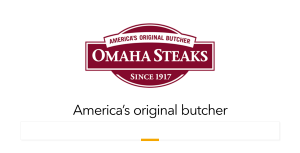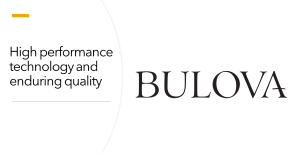Recognition Buyers Guide: What to Look for in Solution Providers
 This article is based on my over two decades of experience in the employee engagement and recognition space, including interviews with hundreds of recognition and human resources executives over those years. Why is it that most companies balk at even paying $1 a seat for recognition technology or paying for expert program design and measurement, when they think little of spending top dollar for customer relationship management (CRM) technology and implementation experts?
This article is based on my over two decades of experience in the employee engagement and recognition space, including interviews with hundreds of recognition and human resources executives over those years. Why is it that most companies balk at even paying $1 a seat for recognition technology or paying for expert program design and measurement, when they think little of spending top dollar for customer relationship management (CRM) technology and implementation experts?By Bruce Bolger
Is the Recognition Field Is Plateauing Due to a Value Creation Questions?
Companies Increasingly Seek Tangible Results
Culture Counts
Technology and Rewards Are Not a Competitive Edge
Tangible Rewards Matter in Recognition
A Fundamental Distribution Challenge
Clients Seek More Transparency in Pricing
Beware of Breakage Models
Click here for links to RRN Preferred Solution Providers.
Here’s what I have learned about recognition, reward and SaaS technology after over three decades in the field: strong cultures and properly designed programs, not technology or rewards, drive meaningful results. Clients increasingly are skeptical of traditional approaches to recognition and are seeking more tangible value creation, analytics, and transparent pricing of rewards.
Unfortunately, what clients say they are now seeking is not the focus of most recognition companies today, and it remains clear if companies are willing to pay for what they say they seek: tangible impact. Many of the newer industry providers offer cutting-edge technology and new rewards solutions, but most lack trained professional services experts nor a clear advisory business model to build and support strategic programs aligned with the purpose, goals, objectives, and values of their client organizations. This is because many of the traditional recognition companies evolved out of companies with a business model focused on selling rewards and because the newer ones backed by venture capital are focused on technology, when neither rewards or technology alone can enhance cultures or boost retention, productivity, quality, service, and other core goals and objectives.
I am writing this report because I know that when properly designed, recognition programs can help organizations achieve their purpose, goals, and objectives and support their values, and because the recognition field is undergoing a period of re-evaluation as increasing numbers of organizations question the benefits. Why is it, for instance, that tens of thousands of companies are willing to spend $50 or more dollar per employee per month for CRM (customer relationship management) technology along with significant implementation fees, yet are reluctant to pay even $1 a seat for recognition platforms and often nothing for professional services? Follow the money—how much organizations are willing to invest is a clear marker of what they value or don’t value.
Here is what buyers should be looking for if they seek tangible value creation and what the recognition field needs to address if it wishes to enhance its role in business.
Is the Recognition Field Plateauing Due to a Value Creation Questions?
After a flurry of well-funded startups hit the scene with ad campaigns mostly focused on technology and rewards, many signs suggest that a lot of companies are taking a pause or fundamentally re-evaluating their recognition programs. Does it really matter how many times employees recognize their peers with badges or points if there are no tangible results or if there is no connection to the organization’s strategic plan? This is why so many incentive companies that used to focus on employee recognition today are shifting to assisting with sales and channel programs, while recognition tech platforms appear to be struggling to continue the rapid growth many experienced during the pandemic.
Companies Increasingly Seek Tangible Results
Most of the success in recognition isn’t predicated on any company’s SaaS technology being particularly better as other companies have similar features—it is because there is a formal strategy, systematic implementation, communication, and ongoing analytics focused on driving and measuring behaviors critical to the purpose, goals, objectives, and values of the organization. These efforts don’t just concentrate on getting employees to engage with the platform, the focus is on getting managers and employees to promote and display the behaviors critical to the organization’s core objectives and values. These programs include analysis of the audience, the goals, and objectives, and business rules that ensure fairness and transparency. They customize the technology to the organization’s work flow, regularly communicate with managers and employees; continually monitor the results, and then follow up with credible analytics demonstrating the value created and ways to improve. This includes careful monitoring of management behavior to ensure complete buy-in.
Culture Counts
Many recognition companies appear to conflate recognition with culture. An effective recognition program authentically taps the power of a positive culture to do great things, but it does not alone create a culture. To flourish across the organization, that comes from the top—a belief by the CEO, ownership, management at all levels that shared purpose, goals, objectives, and values are the underpinnings of success. Recognition focuses on the performers. Culture is a related but separate process that makes people feel appreciated for who they are and involves other tools to foster authentic appreciation—such as a focus on expressing gratitude at all levels of the organization.
Technology and Rewards Are Not a Competitive Edge
The CRM giant Salesforce has proven that the SaaS model can be highly flexible and customizable to meet customer needs but also that there is room in any market for many solutions, given the sheer scale of the potential demand. I know of multiple low-cost engagement technology solutions that provide highly customizable white-label options. Multiple versions offer an appealing platform that address all the key levers of engagement—surveys, information, learning, social recognition, rewards, analytics and ideally connects all stakeholders—sales and non-sales employees, distribution partners, and customers. Note. Click here for the features common with enterprise engagement technologies. Likewise, there are multiple reward solutions that provide value and transparency. The companies focused on technology and rewards are missing the point, in some cases because their financial backers seek highly scalable solutions incompatible with a professional services model. In other cases, it’s because human resources departments won’t pay for expert advice. In fact, human resources departments often force employees to underwrite their own recognition programs through high markups, rather than the organization paying for these services transparently as they do with management consultants.
Tangible Rewards Matter in Recognition
I have read about some recognition companies touting the importance of badges to increase the frequency of recognition over the use of redeemable points, which for budgetary reasons can reduce reward spend. This may be appealing to a human resources department under budget constraints, but it doesn’t create tangible value to the organization. The clear solution is a combination of both tangible and intangible rewards, provided that the value of the points is meaningful to people who perform. For most people, in my experience, pats on the back and kind words are effective forms of building a better culture, but in recognition programs, if there is no tangible benefit to participants for excelling in their work they eventually run out of steam. When given the choice, people will almost always choose the best-known retail gift cards, even if marked up, not because they do not enjoy tangible rewards but because they prefer choice and transparency because they are wary of hidden markups. While one can argue that merchandise awards have the greatest long-term impact on memories, to compete with gift cards, merchandise brands must be effectively merchandised just as at retail in a way that makes the recipient feel confident in its value. Note that for most retailers, customers spend far more on specific merchandise than they do on gift cards, so why should it be any different except for the lack of transparency that raises the suspicion of employees?
A Fundamental Distribution Challenge
While the SaaS market in most fields thrives on having a vast army of implementers able to customize the technologies to meet the clients’ specific needs, no such distribution channel exists in recognition beyond promotional products distributors, mostly selling length of service and safety programs. This presents a major challenge, because selling return-on-investment-oriented recognition programs requires expertise and experience and because the sales cycles can take a year or more, making it costly to hire full-time salespeople.
Clients Seek More Transparency in Pricing
Because so many recognition programs fail to generate a clear ROI to senior management, many companies have constrained budgets that force recognition companies to make money on breakage (unredeemed points) or through high markups on reward items, rather than on tangible value creation recognizable to an organization’s chief financial officer. (To clarify, markups in this instance means that an employee pays a significantly higher amount for a reward item than its fair-market value). This invariably leads to questions and complaints from employees about the high cost of items available for redemption. The human resources department is then forced to explain to employees and senior leaders why gift cards are marked up as much as 25% and merchandise often even more. The number-one complaint employees have post go-live of a program, and there isn’t a close second, is the understandably visceral reaction to unreasonably expensive rewards. This dynamic sours what should be a positive experience for the employee.
There’s a simple, better solution: charge clients appropriate set-up and design fees to design and implement the program, with a clear and transparent fee structure (either SaaS licensing fees or a fee based on the number of points issued) in a way that is transparent and is decoupled from the redemption experience. Points are paid for on issuance, because the employee performed the desired action, and the awards are paid for on redemption with a transparent markup or fee for catalog management, redemptions, and customer service. In my experience, most companies serious about performance are not looking to buy from the low-cost provider, but rather are seeking to build a strategic program that achieves organizational objectives and having a positive impact on their employees. Most companies also recognize there is a cost to support design services, ongoing communications, surveys and data analytics, and a robust reward catalog. The key, and the often missing dynamic, is to craft a transparent pricing model that supports and justifies value creation. When done properly, customers will view money spent on a strategic program as an investment rather than a line-item expenditure.
Beware of Breakage Models
The recent collapse of a recognition awards company suggests that its lenders might have feared it lacked the cash on hand to cover all outstanding redemptions. In any case, beware of recognition companies whose model includes the expiration of reward points, as it’s a sign that their business model depends on breakage. (Breakage is when reward points are unredeemed). Breakage can easily total 20% to 30% of all points issued or more, especially if the vendor’s model artificially creates breakage by imposing a time limit for redemptions. To combat breakage, an organization should vigorously promote redemptions and resist pressure to set expiration dates unless the terms are vigorously communicated to employees.
How RRN and Brand Media Coalition: Your Partner in Success in Incentives, Rewards, and Recognition

Published by the Enterprise Engagement Alliance at TheEEA.org
- The only weekly news, how-to and resource publication of record for the Incentive, Rewards, and Recognition field.
- The only marketing agency focusing specifically on the IRR and broader engagement marketplace.
- All the industry news, research, announcements, and how-to articles read by over 20,000 end-users in sales, marketing, and human resources; incentive, recognition, loyalty and promotional companies, as well as marketing and human resources agencies, seeking to enhance performance through effectively designed incentive programs.
- Unparalleled business development services for engagement, incentive and incentive travel, recognition firms; brands, gift cards and master fulfillment companies, and technology firms, featuring ROI-based business development strategy design and ongoing digital and social media and e-newsletter communications to help marketers profit in the coming era of cookie-less marketing.
- Unique abilities for solution providers to sponsor authoritative, evergreen content directly related to what they sell through the EEA’s Effective Practices series on articles in our media platforms.
- EEA YouTube Channel with over three dozen how-to and insight videos and growing with nearly 100 expert guests.
- Access to new technologies from EEA preferred solution providers enabling brands to create their own points-based or transactional redemption site.
- Unparalleled expertise in program design, return on investment measurement, reporting, and prescriptive analytics.

















